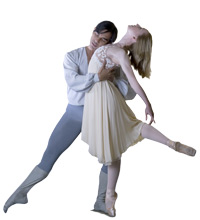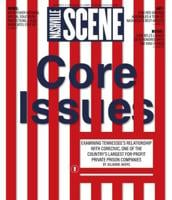by Martin Brady
People’s Branch Theatre’s The Antigone Cycle updates Sophocles’ three Theban plays (Oedipus Rex, Oedipus at Colonus and Antigone), often known as the Oedipus Cycle, by presenting the story’s classic family conflicts and violent motivations in a hip-hop context. Artistic director Ross Brooks’ script revisits the fate of Oedipus’ cursed offspring (daughters Antigone and Ismene, sons Eteocles and Polynices), who are by turns combative, courageous and prudent, and who all come to tragic ends—in this case, in a hail of gunfire.
Brooks’ writing offers a curious mix of slangy, rap-style couplets and more formal dialogue drawn from the ancient texts, all played within an amorphous ’hood setting and infused occasionally with urban musical snippets composed by Lisa Kimmey, Juan Winans and Justin Gray. There’s also some relatively undemanding group choreography designed by D. Richard Browder.
Brooks aims to find the nexus where the boldly passionate declamatory speech of the Greeks meets the modern-day intensities of poetry slams and Bloods-Crips rivalry. Cast members—some pulling double duty—excel when they’re playing to their strengths, but alas, no one seems capable of organically uniting these disparate styles with any consistency.
The play is powerful when the focus is on actors Rashad Rayford (Eteocles) and Kamal Bolden (as blind-man seer Tiresias and also Creon’s son Haemon), simply because they’ve got some presence and a credible way with anger and omen. Yet Rodrikus Springfield’s Creon is neither particularly articulate nor suitably commanding. Stephanie Vickers, the only non-African American in the ensemble, is cast against gender as the rogue Polynices, and also as the conciliatory Ismene. Her classical chops get a brief workout, but sustaining emotion in whatever vocal mode proves elusive. Alicia Ridley is disappointing as Antigone, her performance characterized by a pained self-consciousness that flattens her intended nobility.
Brooks doesn’t direct this effort with his usual attention to swift pacing, either, and despite the show’s implied rhythmic vibe, there are many static moments onstage. There’s some hip in this production, but not nearly enough hop. It’s an interesting experiment at best.
The production got off to a halting start—opening weekend was curtailed by scheduling conflicts with Belcourt Theatre programming, and its April 11 late-night gig was canceled. But a full slate of performances last week moved the engagement forward, and the company completes the run with shows nightly through Saturday. Showtime is 7:30 p.m.
Romeo and Juliet revisited
Nashville Ballet closes its season this weekend with Sergei Prokofiev’s Romeo and Juliet, a favorite of choreographer Paul Vasterling, who staged the piece in Nashville in 2004.
“The essence of our previous production is still there,” says Vasterling, “yet our company is bigger and more accomplished. We’re striving for more coherence in balancing the Shakespeare and the classical steps.”
Vasterling’s interpretive inspiration derives unabashedly from Franco Zeffirelli’s famous 1968 film version. “This is the perfect story ballet for those who don’t usually go to the ballet,” he says. “It’s so clearly told.”
Completed in 1935, Prokofiev’s masterly score was initially rejected by the Bolshoi Theatre as “undanceable.” The composer made changes, and after the ballet’s successful Czechoslovakian debut in 1938, it took its place in the repertoire as an opus noted for its drama, restraint and deft approach to the conflicting themes of young love and death. The Nashville Symphony performs the music, with Paul Gambill conducting. “The score is both blessing and curse,” says Vasterling. “The music changes its tone a lot, and the story is embedded in these changes.”
Vasterling’s cast of 40 features both first and second company members, plus some local actors, among them the husband-wife team of Jose and Sara Youngblood-Ochoa.
The big interest, of course, revolves around the principals, who are double-cast in the famous leading roles. Yet only Christopher Mohnani has previously danced the ballet. He partners with first-timer Christine Rennie. The other pairing features the R&J debuts of Jon Upleger and Sadie Harris, who together created magic a little over a year ago with the intensely expressive “Ploughing the Dark” from the “Bluebird Cafe at the Ballet 2” program. “Our Juliets are very strong,” says Vasterling, “and very different in their approaches. Christine’s is more earthy; Sadie’s more ethereal.”
As in ’04, Vasterling has enlisted Londoner Timothy Klotz to assist with the daring sword-fight choreography, thus contrasting what the director calls “exalted hyper loveliness” with realistic fighting and street scenes, resulting in “a big theatrical experience.”
Romeo and Juliet will be performed April 25-27 at TPAC’s Jackson Hall. For tickets, call 255-ARTS.





